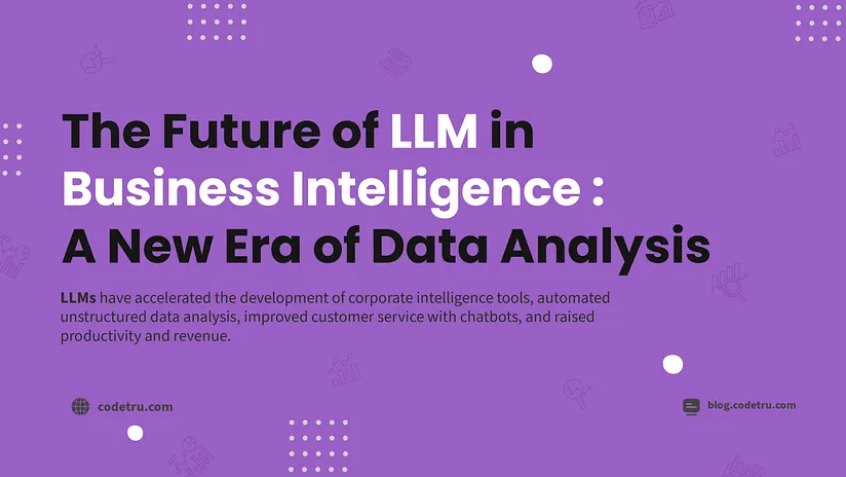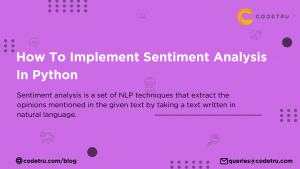Anaplan, whose business as is evident in the name is a combination of “analysis” and “planning, is a web-based enterprise platform for business planning. Anaplan gained popularity through its in-memory database and calculation engine called HyperBlock. Companies or business using their services have only to upload their enterprise data on the Anaplan cloud server, the users can quickly and easily, organize and analyse all types of enterprise data from finance, human resources, sales and other areas of business operations.
Anaplan platform’s key modules include workforce and quota planning, commission calculation, project and demand planning, budgeting, and planning & forecasting, financial consolidation, and profitability modelling. However, Anaplan’s stand-out features enable a very high degree of ease of use. Anaplan platform gives its customers Excel-style functionality with which they are already familiar as they use Excel in their daily lives. This means that even ordinary business users, who are not proficient in doing planning, can use Anaplan to make data-driven decisions. In summary, Anaplan enables even a regular business use of any organization to understand his business with the skill sets of data scientists.
Combined with ease of use and other advantages offered to the users since it was founded in 2008 has today put the company in the league of taking on the giants of the industry. In their field, organic evolution must lead to Anaplan becoming one of the leading planning and performance management platforms for smart businesses. As they say ‘Anaplan combines an unrivalled planning and modelling engine, predictive analytics, and cloud collaboration into one simple interface for business users.
The industry-beating features have made it favourite amongst many a user of web-based enterprise planning tools. Gartner’s 2014 Magic Quadrant for corporate performance management software suites recommended it amongst the “other vendors worth considering” section after it missed on capturing the top ranking. Further explaining their reasoning behind backing Anaplan, they said, “Anaplan provides a capable SaaS business modelling and planning platform for finance and other business functions to plan collaboratively and improve operational performance.’
Key Benefits for Businesses When They Are Using Anaplan?
Anaplan reasons that isolated point solutions and disparate range of spreadsheets aiding to the business are archaic and were of the first generation of the business, they simply aren’t designed to meet the robust needs of the businesses today, thus a lot of capital and human investment is needed in making those work. So, Anaplan has created a platform that delivers a single real-time, cloud-based environment. They claim to be the best in helping businesses and decision-makers accurately plan and optimize thus being enabled to quickly respond to change as a department or organization. As they claimed and agreed to by the users, it does deliver on the integration by seamlessly aligning across the entire business and processes. This empowers businesses to become lean, proactive, fast, flexible, and collaborative
In real-life applications, usually, the equation is a great deal wider as it tries to encompass a phenomenon and its underlying nudges. In these cases, several independent variables go into the prediction of one dependent variable, case in point being, consideration for a brand. When a consumer is considering a brand, they take all the Ps and Cs of marketing and all the other inputs of marketing, advertising, media, branding, placement and pricing, each has a little or small impact on the overall consideration, except in some cases.
For decision-makers, who have the budgets to manipulate not all but some or in most cases just part of the marketing mix and are expected to produce results from focusing on that variable, also marketing and brand managers choose to focus on different triggering variables that result in an eventual desired action from the consumer. In these cases, the decision-makers, choose manipulation of their marketing resources in a way that they select one or two of the effecting factors and yet result in a huge increase in the desired result that is consideration or sale.
The Anaplan Platform Combines Five Elements for Success
Versatility, scale, connection, foresight, and self-service.
While it delivers on the world-class performance, let us look at some of the reasons for their success, in short, what are the advantages a business gets whey they sign on to Anaplan:
1. Versatile and Robust
The data or insight needed for planning is possible when are the system can deliver integration of the widest set of data types and sets and to have data and analysis engine to be able to create a single-window view of the desired answer or solution. Only when a system can handle and curate all data that is relevant to the business can it produce insightful results. A versatile and robust system gives users the freedom to think and plan freely. In Anaplan, Business owners can streamline data integration by linking models and plans.
2. Leveraging Patented proven Expertise
The key advantage that these platforms are their patented data models which are used for delivering the results. Their java based Hyperblock platform is a collection of such functionalities, where apps delivering standalone functionalities have been stitched to function as a part of an ecosystem and thus create an organic self-sustaining learning and growth process. These apps help in expediting the planning and increase time to value.
3. Single stop destination for all asking all questions
Anaplan allows its users to see their plans across the business at aggregate and detailed levels. The enables users to manage different dimensions of business in real-time.
4. Simply better decision making
Anaplan claims to have the world’s best prediction model engine. This helps users in solving any planning challenges across the business with business user-owned models. The system helps Increase accuracy of decisions and improve business outcomes leveraging predictive analytics and “what-if” scenario analysis.
Users can stay aligned to changing market conditions with Anaplan’s flexible modelling engine using their system to generate granular insights, drive growth, and monitor real-time metrics to pivot quickly.
5. Cost Cutting — The icing on the cake
As detailed above, their reason for existence is to bring in the newest of technology to cut down the time and cost involved in the process. As they want to do away with the efforts of many people consuming many hours, investing countless number of hours to bring the process together tends to be a very expensive process. But with Anaplan, the users can do away with all those old expensive processes, and in the process, Anaplan helps its users Reduce costs and risks by eliminating spreadsheets and consolidating redundant planning systems.
Anaplan’s Hero: Java-based ‘Hyperblock’
Amongst the many of its features is Anaplan to enable real-time enterprise planning and actions. It delivers this using its HyperBlock technology. This platform allows multi-user or tenant on a cloud to make advanced decision making without compromising on speed. They claim the engine to be the most powerful modelling engine, this tool allows to scale for the granularity of insight to help business analyze, report and respond better and in time. The modelling engine gives predictive power to the business, thus being able to see the future and plan for it better. The engine is so advanced that it allows for the user to create a different business scenario and see how they will be able to handle those situations so that the businesses are prepared for any future situation or opportunity.
With all the above the key benefits for the business are:
1. They get one platform to drive an integrated business plan. One common platform for integrated planning and reporting with apps and processes across all lines of business, including Finance, Sales, Supply Chain and Operations, Marketing, HR, and IT. Ensure high adoption and planning automation as you roll out new apps in a real-time, cloud-based environment for all business needs.
2. Multiple data integration options to centralize data. Their self-serve apps help to easily integrate multiple data sets on one single cloud platform. Centralized planning of data from transactional source systems is on Anaplan data hub model for use throughout all Anaplan apps. The users can take advantage of. Anaplan HyperConnect powered by Informaticab. Pre-built ETL connectors to Informatica, MuleSoft, SnapLogic, and Boomi for hundreds of data sources, including Workday, NetSuite, Oracle, and SAP. Custom integration using Anaplan REST-API.
Dynamic time, versions, hierarchies, and scenarios. It enables users to Instantly cascade strategic plans by key dimensions to align plan, budget, and forecast. It helps users make smart business decisions using unlimited scenarios for proactive comparative insight by leveraging built-in multidimensional planning intelligence, including time, versions, unlimited hierarchies, user-defined formulas, and master data.
Self-service UI for modelling, analysis, and “what-ifs”
a. Anaplan enables end-users to create and modify complex models and “what-if” scenarios on the fly that answer complicated quantitative questions and span multiple areas of the business.
b. The users can create simple, real-language formulas — no coding required.
c. Drag-and-drop hierarchy changes with immediate effect, with no dependence or burden on IT.
All in all, Anaplan users can Plan and manage performance for any area of the business — from Sales and Finance to Supply Chain — all connected in real-time.
Frequently Asked Questions About Anaplan
1. What is Anaplan and how does it benefit businesses?
Anaplan is a web-based enterprise platform for business planning that combines “analysis” and “planning.” It helps businesses organize and analyze data from finance, human resources, sales, and other areas. Anaplan’s key benefits include real-time planning, ease of use, and the ability to make data-driven decisions, making it an invaluable tool for businesses seeking to optimize their operations and stay competitive.
2. How does Anaplan’s HyperBlock technology work?
Anaplan’s HyperBlock technology is an in-memory database and calculation engine that allows for real-time enterprise planning and decision-making. This powerful modelling engine enables multi-user collaboration on a cloud platform, providing businesses with the capability to analyze, report, and respond quickly to changing conditions. HyperBlock’s predictive analytics and scenario planning help businesses prepare for future opportunities and challenges.
3. What are the key features of the Anaplan platform?
Anaplan offers a wide range of features, including workforce and quota planning, commission calculation, project and demand planning, budgeting, and financial consolidation. The platform is known for its user-friendly Excel-style functionality, making it accessible to ordinary business users. Anaplan also provides predictive analytics, “what-if” scenario analysis, and a flexible modelling engine, which enhance decision-making and business outcomes.
4. How does Anaplan support data integration and centralization?
Anaplan supports multiple data integration options to centralize data from various sources. It offers self-serve apps for easy integration, pre-built ETL connectors for popular platforms like Workday, NetSuite, Oracle, and SAP, and custom integration using Anaplan REST-API. This centralized data hub allows businesses to leverage transactional data for comprehensive planning and analysis across all Anaplan apps.
5. What are the cost benefits of using Anaplan for business planning?
Anaplan helps businesses reduce costs and risks by eliminating the need for spreadsheets and redundant planning systems. Its real-time, cloud-based environment streamlines processes and improves efficiency. By integrating various business functions on a single platform, Anaplan reduces the time and resources required for planning, ultimately leading to significant cost savings for businesses.







